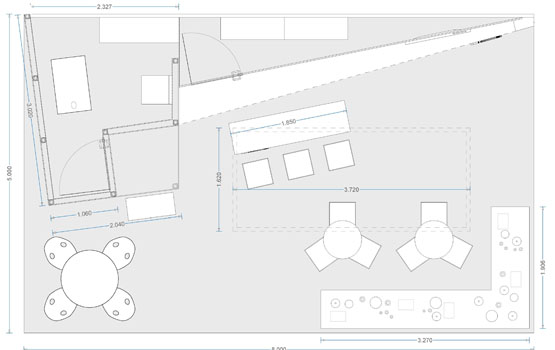How do we calculate the size of our booth when participating in a trade show?
What aspects do we take into account when calculating the square meters with which we will exhibit?
The total space of a booth is calculated by adding the usable space plus the occupied space.
But what is usable space and occupied space? And more importantly, how are they doing?
The occupied space is the space we need for the inanimate objects we want to have in the stand (showcases, displays, counters, bars, storage, furniture, exhibits, demonstration areas, etc.).
The open or useful space is the space that is not occupied by any object, that is to say, the space that is free for the circulation of people. We can calculate this space by knowing the number of people who will attend the booth. For each person we should calculate approximately 9 square meters of free space.
Once we have the total size of the space we need, we have to determine if the budget is sufficient for those square meters. If not, we will have to reduce the amount of space, so consequently we must also reduce our expectations, in terms of the results, that we hope to obtain.
The smaller the size of the booth, the smaller the number of booth personnel, which translates into fewer visitors served. We will be missing opportunities to serve all potential customers.
Other factors to consider in this equation are the size of the largest exhibitors and the size of our competitors’ booths.


